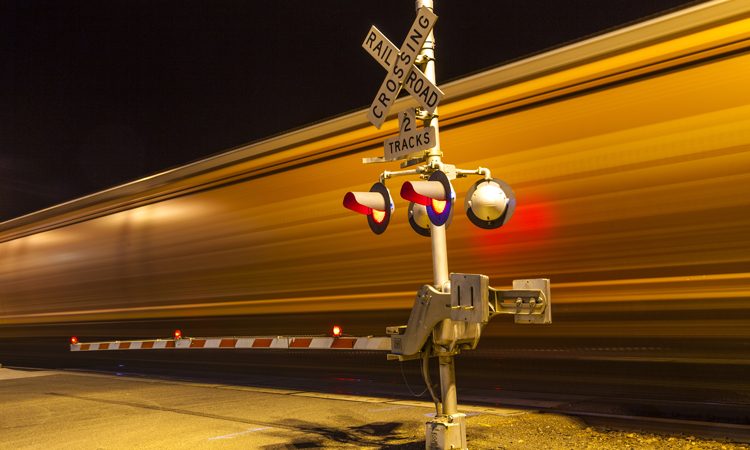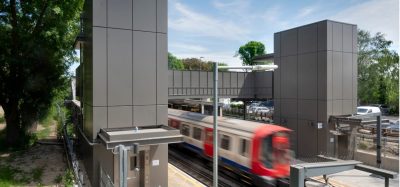The rail sector’s efforts in improving level crossing safety
Posted: 13 July 2016 | Jean-Baptiste Simonnet - CER | No comments yet
Level crossings represent a safety risk that affects much more than just railways’ performance. The consequences of a collision between a train and a road vehicle, a cyclist, or a pedestrian often have a dramatic outcome. The European rail sector constantly strives to improve safety at level crossings to reduce the number of accidents that occur at this road-rail interface every year. Libor Lochman and Jean-Baptiste Simonnet at the Community of European Railway and Infrastructure Companies (CER) share the rail industry’s efforts in this respect, whilst highlighting the need for public authorities, road organisations and users to play their part too.


Since the creation of the EU railway safety directive, level crossing accidents are monitored in statistics and in the so-called ‘common safety indicators’. In recent years, on average, one person is killed and close to one seriously injured at level crossings in Europe every day. Level crossing accidents represent more than one quarter of significant railway accidents; level crossing casualties account for more than one quarter of all casualties in the railway sector.
This also means that level crossing accidents are today a major driver for railway safety performance in the EU Member States.
At the same time, it is important to mention that only one in 100 road users that die each year on EU roads dies at a level crossing. Many accidents at road and rail junctions are deadly examples of what happens when a car, a cyclist or a pedestrian carelessly crosses a railway line. However, for the road sector a level crossing is merely viewed as an obstacle and a dangerous point, but not as an issue requiring significant road safety improvement. While a small number of accidents do result from a technical failure in the rail system, in many cases level crossing accidents are caused by road users failing to observe signals and basic traffic safety rules. For this reason collaboration between rail and road is absolutely essential.
Level crossings – regulatory framework
According to the 1968 UNECE Vienna Convention on Road Traffic and the Highway Code, trains have priority, whilst road users and pedestrians must comply with road signs and signals in order to cross safely and consequently prevent any collision arising from misuse or inappropriate behaviour and potentially endangering train passengers, crew and other users. In other words, using a level crossing is safe as long as all involved users follow the rules.
Awareness campaigns and actions with public authorities are key to enhancing safety at level crossings. That is why CER is supporting initiatives such as the International Level Crossing Awareness Day, coordinated by the International Union of Railways (UIC). Such campaigns are essential as they foster dialogue, bringing together major international rail and road associations, governmental agencies and non-profit organisations. Only by joining forces can awareness-raising activities and the promotion of safe behaviour at level crossings reach all road users, including pedestrians and cyclists, who are the most vulnerable.
Human factors
Technical improvements, however, are just one side of the coin. There are also human factors involved in making level crossings safer. For example, the closing of a level crossing due to an approaching train must be acceptable and accepted by all road users: we can observe many more road users attempting to enter a closed level crossing when the barriers are closed during a long period of time. While technical systems are being improved, it is essential to consider more systematic punishment for unsafe behaviour of road users at level crossings. This should be in conjunction with adequate road training to ensure the proper understanding of level crossing signage.
However, bad maintenance or misapplication of rules might also lead to accidents. In particular, this can lead to a failure of the level crossing equipment or to rail staff taking inappropriate measures to inform road users when level crossing equipment is out of order.
Level crossing technology
There are different kinds of technology in place to ensure the safety of level crossings. Track-side train detection enables the determination of when a train is approaching a level crossing. As a result, the signalling and barrier alerting the road users can be activated with a high level of reliability and safety. These technologies are state-of-the-art but can lead to increased waiting times for road users at level crossings, since the activation of barriers has to take into account the worst case scenario (i.e. activation of the level crossing independently of train speed and braking performance).
The harmonised control command and signalling system, ERTMS, includes functionalities for level crossing management. The inclusion of satellite position, moving block/relative braking distance (ERTMS Level 3) and automated train operation (ATO) can provide valuable improvement of level crossing safety; automated detection and low-latency command of trains can indeed provide better protection. This will nevertheless require fully available communication between track and train: mitigation of any loss of radio communication – in particular, in the case of interference between railway radio and public telecom networks – is imperative to ensure the safe protection of level crossings.
The development of ERTMS Level 3 will offer further opportunities to close the access to level crossings for the shortest possible time, as accurate knowledge of a train’s position would enable the safety margin to be reduced. Appropriate management of this technology still needs to be defined, however, in order to ensure that railway safety is maintained when the responsibility of positioning the train is shifted from the infrastructure to the train itself.
Enhancement of communication between rail and road is also an attractive prospect. Improved information to road users can further protect level crossings, increase the flow of road traffic and reduce waiting time. Radio alerts, distant warning signals or extra physical barriers should be further developed in cooperation with road stakeholders and authorities to reduce accident rates.
This can now be expected in the context of the Cooperative Intelligent Transport System (C-ITS); the European Commission’s initiative that intends to cover a very wide range of services, such as improving road safety by avoiding accidents and reducing their severity through early warnings of unexpected obstacles.
The future of level crossing safety
In a European society striving to reduce accidents and save lives wherever possible, level crossings are increasingly being replaced by bridges. This is, however, not always physically possible nor economically viable. It is important to undertake a proper cost-benefit analysis for each level crossing, determining either its replacement or the definition of relevant and sustainable level crossing equipment.
As aforementioned the actions to protect level crossings and to increase civil awareness cannot be the sole responsibility of the rail sector. A whole system approach is needed. The railways ‘alone’ cannot solve the problem through technology. Rail – together with road – should always try to identify how the topography of level crossings can be improved to avoid, for example, a vehicle being blocked on a railway line once the barriers are closed. Such actions not only require a high level of cooperation between road and rail infrastructure managers, but also an appropriate distribution of the cost. In addition, the systematic education of car drivers and pedestrians should be a joint exercise.
In the future level crossing control should automatically be integrated into the traffic management system. The deployment of ERTMS is an enabler for this. Automatic train operation and control coupled with obstacle detection could also increase the protection of level crossings as detecting a truck, bus, car, cyclist or pedestrian in time can limit, or even prevent, the damage of a collision. On the road side, interoperable deployment of the C-ITS will contribute to level crossing safety enormously.
Innovative technologies, once well tested, should be systematically introduced on the basis of harmonised standards. Level crossing protection should perform increasingly well and enable economies of scales. This also means that migration towards fully automated level crossing protection will have to rely on common infrastructure engineering practice, safeguarding the interoperability of ERTMS trains.
Biographies




Issue
Related topics
Related organisations
Community of European Railway and Infrastructure Companies (CER)






